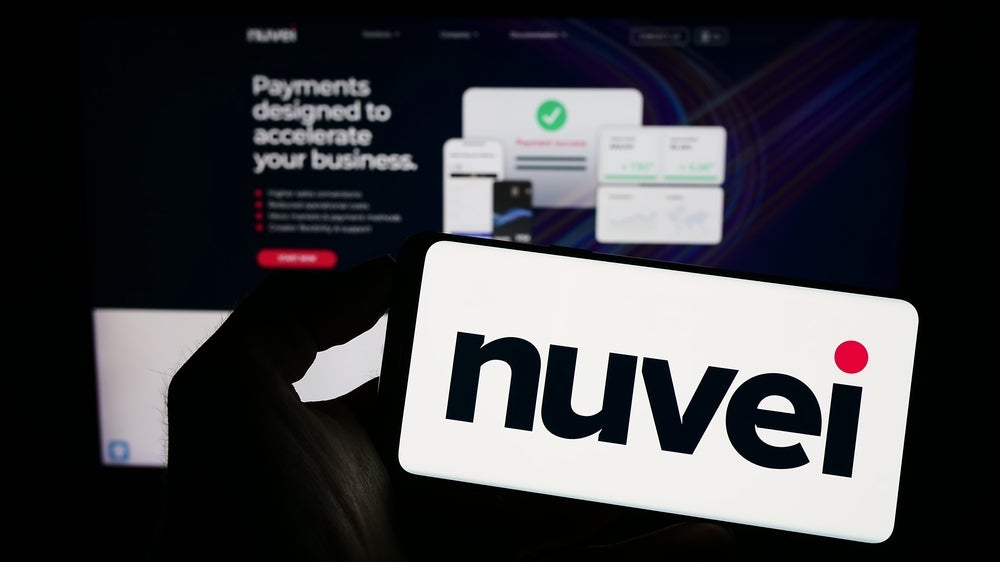Conference held by MasterCard Europe covered the numerous
opportunities and challenges, both technological and
merchant-related, currently facing the industry, as well as
examples of successful co-branded propositions. Truong
Mellor reports from Malta.
The theme of this year’s Affinity and Co-branding conference, held
on 25-26 September, was “powering loyalty, powering profit”. To
this end, the speakers predominantly touched upon issues such as
improving merchant benefits, as well as how they are leveraging
newer technologies to enhance consumer loyalty, and also how they
are utilising the captured data to help improve the profitability
of a co-branded card portfolio.
Sitting between the issuing bank and the merchant partner,
MasterCard has an increasingly crucial role to play in the
co-branded sector.
Technology was a prevalent theme at this year’s conference, with
the contactless technology of PayPass truly coming into its own
over the last 12 months. This has helped drive further value for
consumers, merchants and issuers, with over 122,000 separate
merchant locations and approximately 37 million cards in the
marketplace as of June 2008.
The advantages and opportunities of PayPass can be roughly seen in
both financial and non-financial dimensions – the low-value
payments space of the former and the ease/speed of transactions
using contactless technology.
It is the latter that may become the significant driver of uptake.
The chip and PIN technology of PayPass also allows for ticketing
and building access, enhancing its potential for a variety of
applications.
How well do you really know your competitors?
Access the most comprehensive Company Profiles on the market, powered by GlobalData. Save hours of research. Gain competitive edge.

Thank you!
Your download email will arrive shortly
Not ready to buy yet? Download a free sample
We are confident about the unique quality of our Company Profiles. However, we want you to make the most beneficial decision for your business, so we offer a free sample that you can download by submitting the below form
By GlobalDataUsing technology for new applications
According to Matthieu van der Schueren, vice-president of large
merchant strategy and business development at MasterCard Europe,
developments in technology will continue to enable these types of
innovations.
“Maybe the next step would be biometrics – putting consumer data on
the card, which would help with security and airline boarding,” van
der Schueren suggests.
“Loyalty points could be contained on the card as well. There are a
lot of potential applications that are enabled by the technology,
but then they have to be driven and carried forward in close
collaboration with the merchant partners.”
Another potential area where co-branding may be able to harness
newer payment applications is prepaid. The online and youth
segments of the market are oft-cited areas for stored value payment
propositions, and the potential of co-branded schemes are no
exception to this.
In many cases, a prepaid offering would be a natural fit with a
PayPass-enabled scheme, such as the MBNA and Manchester City
Football Club prepaid card launched in March this year. This
enables not only access to the football stadium, but cardholders
can also use the product to make purchases both within and outside
of the grounds (see CI 397).
Opportunities and challenges
Co-branding is an area that MasterCard has traditionally been
strong within, and the network has reported a 16 percent growth in
this segment across Europe over the last four years.
 This growth certainly shows no sign of abating. While the
This growth certainly shows no sign of abating. While the
travel sector has been largely penetrated, it is predicted that
this segment will continue to grow in Eastern Europe as well as
through a growing interest in these schemes from low-cost carriers
and online travel and entertainment (T&E) merchants.
However, retail continues to be the largest component of the
co-branded sector in the region – MasterCard reported that as of
2006, 59 percent of newly-launched co-branded programmes were
retail-based. An interactive voting system that was used to gauge
the opinions of delegates during the conference demonstrated that
54 percent of attendees saw the greatest opportunities for future
growth continuing to be located within the retail sector.
According to van der Schueren, airline co-brands are continuing to
dominate the sector, largely because of their premium database of
consumers. This has led to increased competition, inevitably
creating greater propositions for the cardholder. However, these
developments alongside an increasingly savvy consumer base and the
fluctuating cost of fuel are making such programmes a lot more
challenging.
Nonetheless, the figures in upturn and increased expenditure
continue to speak for themselves.
According to statistics from MasterCard, co-branding programmes in
the fuel and airline sectors increase spending by 37 and 29 percent
respectively. What van der Schueren also pointed out is that banks
are beginning to develop their own travel-related rewards schemes,
and ‘airline-agnostic’ propositions that offer the consumer greater
flexibility and choice.
For a successful co-branding proposition, significant scale remains
an important factor, according to Andrea Scerch, general manager of
European product and retail solutions at MasterCard.
“For players that do not have scale, it is important to be in some
kind of merchant coalition,” Scerch told CI, citing the example of
Nectar in the UK.
Instant card issuance is also an increasingly powerful tool of both
European banks and retailers, with figures from programmes
currently in action that show activation rates tripling within the
first 30 days.
Moreover, instant issuance credit card sales from existing
MasterCard issuance programmes show that credit card sales increase
by up to 119 percent while attrition drops by 25 percent. With the
focus of instant issuing turning towards flexibility as opposed to
security restrictions, this seems set to further enhance the
co-branding proposition.
The conference also provided an insightful view of co-branding from
the retailer’s perspective.
According to Jean Philippe Habran, business leader of co-branding
at MasterCard Europe, there will be 2 billion middle-class
consumers across the globe by 2025. What they will be looking for
primarily will be retail goods (in particular food) and financial
services; provisions that can be united through a co-branded
payment card.
One good example of a successful co-branded retail programme is the
House of Fraser card offered by the upmarket UK retailer. The
co-branded proposition grew out of an in-store rewards programme
and a private-label store card, and now boasts a 15 percent
increase in spending and over 40 percent more cardholders.
Maureen Dunlop, head of card services at House of Fraser, told CI
that the addition of out-of-store spending to the proposition has
made it a lot more valuable for the cardholder, helping the drive
for ‘front-of-wallet’ status.
“Because of our branding and our market position, we felt very
confident that customers would be happy to use our card in order to
get the rewards back at House of Fraser because of their engagement
with us,” Dunlop explained.
Opening the conference, MasterCard’s head of co-branding, Frederic
Conrads, identified several opportunities for co-branded programmes
such as a growing overall interest from both merchants and
consumers.
He identified the retail category in Europe as still having a
relatively low penetration rate that could be further capitalised
upon, and pointed out that while regional penetration is strong, it
still remains inferior to other regions such as Asia-Pacific and
the US.
The impact of regulation
Nevertheless, Conrads was quick to temper this enthusiasm with some
caution regarding the current headache that the wider financial
environment presents, as well as the challenge of meeting the
requirements of an increasingly sophisticated customer and the
continued threat of regulatory developments within the cards
industry.
It is this last point that many feel is the biggest thorn in the
side of the industry. An impromptu vote among the delegates at the
conference showed over two-thirds of them saw the regulatory
environment as the biggest challenge they face at present, with
around half of them specifically identifying the threat of merchant
impact on issuers.
Christophe Baert, MasterCard’s regulatory affairs counsel for
Europe, pointed out that beyond the continuing quagmire of
interchange, regulatory challenges were being faced across several
different markets in Europe including Poland, Germany and
Hungary.
However, Baert also highlighted the fact that a shift in focus and
priorities in the SEPA implementation process has diluted its
potential impact, with the constantly shifting criteria such as a
clearly defined end-date and geographical scope creating
uncertainty around the scheme.
Regarding interchange, MasterCard is continuing work with the
European Commission in order to resolve the dispute over
interchange fees, and hopes to agree upon a business-sustaining
level pending the outcome of its appeal.
Unsurprisingly, Baert also pointed out the continuing environment
in the ‘laboratory’ of Australia since regulation pertaining to
interchange fees was introduced in 2003, and the ambiguity of the
results so far in terms of the regulators achieving their stated
goals (see CI 391, 407).
New markets
The majority of delegates at the conference saw the emerging
Eastern European markets as the key to future growth, with 60
percent specifically identifying Russia as having the most
promise.
In many of these countries, the retail sector is not yet
concentrated among the hands of large institutions, and many
industry observers are waiting to see if the domineering food
retailers like Tesco or Carrefour take a significant market share
to build a database and take advantage of cross-selling
opportunities.
However, one notable market for co-branding can be found in the
shape of France, where the regulators have only in the last 12
months sanctioned co-branded card schemes between banks and
retailers. Both van der Schueren and Scerch highlighted the
momentum of the French market and the potential for future
growth.
Banque Accord, the banking arm of French retailing giant Auchan,
has launched a PayPass pilot as part of its efforts to transform
its private-label cards into co-branded products, with a national
rollout planned for 2009 (see CI 391).
Yet the French market model is unique in that the large retailers
already own their financial institutions, so the platform and the
license to issue these cards already resides with them.
“It is a great advantage for them,” explains van der Schueren. “The
discussion is about which network to use – it is not about the
issuer.
“For MasterCard, the fact that co-branding is now possible in
France brings new opportunities for our business.”








